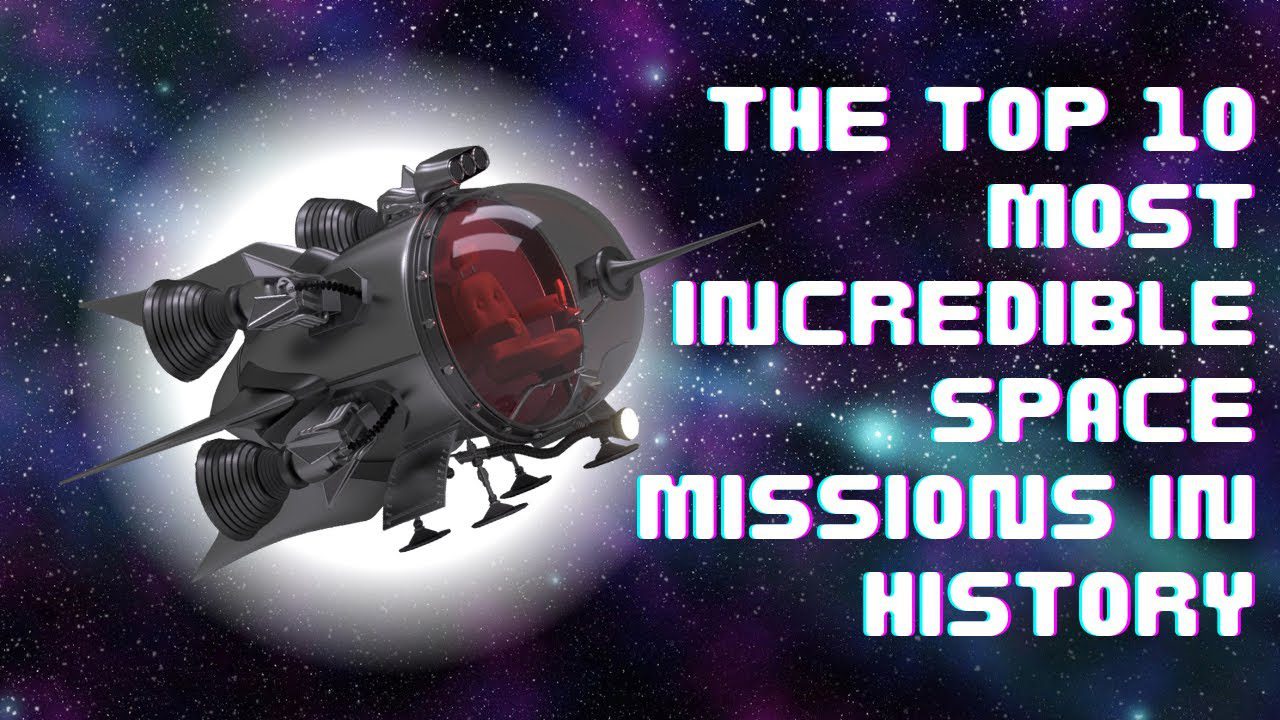As technology improves and space travel becomes more accessible, we can only imagine what incredible discoveries and achievements lie ahead in the world of space exploration.
The Top 10 Most Incredible Space Missions
Space has been a topic of fascination for humans for centuries, and we have come a long way in our exploration of the cosmos. From unmanned probes to manned missions, we have achieved some incredible feats in space exploration. Here are the top 10 most incredible space missions that have contributed to our understanding of the universe.
1. Apollo 11
The Apollo 11 mission is one of the most iconic space missions in history. On July 20, 1969, Neil Armstrong became the first human to set foot on the moon, followed by Buzz Aldrin. Michael Collins, who stayed behind in the command module, orbited the moon. The mission was a major achievement for NASA and the United States, and it paved the way for future lunar exploration.
2. Voyager 1 and 2
The Voyager missions were launched in 1977 to study the outer planets of our solar system. Voyager 1 and 2 have explored Jupiter, Saturn, Uranus, and Neptune, and they are still transmitting data back to Earth today. Voyager 1 has become the first man-made object to leave our solar system, venturing into interstellar space. The Voyager missions have provided us with a wealth of information about the outer planets and have expanded our knowledge of the universe.
3. Hubble Space Telescope
Launched in 1990, the Hubble Space Telescope is one of the most important tools for astronomers. It has revolutionized our understanding of the cosmos by capturing stunning images of galaxies, nebulas, and other celestial bodies. The Hubble has helped us discover new planets outside our solar system, and it has provided us with valuable data about the universe’s expansion.
4. Mars Rovers
NASA has sent several rovers to Mars to study the red planet’s surface and environment. The most recent mission, the Mars 2020 Perseverance rover, landed on the planet in February 2021. The rovers have provided us with valuable data about the geology and climate of Mars and have given us a better understanding of the potential for finding life on the red planet.
5. New Horizons
Launched in 2006, the New Horizons mission was the first spacecraft to visit Pluto. The mission provided us with the first detailed images of the dwarf planet, as well as information about its atmosphere and surface. New Horizons is still exploring the Kuiper Belt, a region beyond Neptune that contains icy objects that may hold clues about the formation of the solar system.
6. Cassini-Huygens
The Cassini-Huygens mission was a joint project between NASA, the European Space Agency, and the Italian Space Agency. Launched in 1997, the spacecraft orbited Saturn and its moons for over 13 years, providing us with a wealth of data about the ringed planet and its satellites. The Huygens lander also landed on the moon Titan, providing us with the first images of its surface.
7. Kepler Space Telescope
Launched in 2009, the Kepler Space Telescope was designed to search for exoplanets – planets outside our solar system that orbit other stars. The mission discovered over 2,600 exoplanets and helped us understand the frequency and diversity of other planetary systems in the Milky Way galaxy.
8. International Space Station
The International Space Station (ISS) is a joint project between several countries, including the United States, Russia, and Canada. The ISS has been continuously inhabited since 2000, and it has been used for scientific research, technology development, and human spaceflight. The ISS has provided us with valuable data about the effects of long-term spaceflight on the human body, as well as the potential for future space exploration.
9. Pioneer 10 and 11
Pioneer 10 and 11 were launched in the early 1970s to study the outer planets of our solar system. The spacecraft provided us with the first close-up images of Jupiter and its moons, as well as data about the planet’s magnetic fields and radiation belts. Pioneer 10 was the first spacecraft to leave the solar system, and it is still transmitting data back to Earth today.
10. Sputnik 1
Sputnik 1 was the first artificial satellite launched into space, on October 4, 1957. The launch of the Soviet satellite shocked the United States and spurred the Space Race. The mission marked the beginning of human space exploration and paved the way for future space missions.
Conclusion
These are just a few of the incredible space missions that have contributed to our understanding of the universe. From the first moon landing to the ongoing exploration of Mars and beyond, we have achieved some amazing feats in space exploration. These missions have expanded our knowledge of the cosmos and have paved the way for future exploration and discovery.
